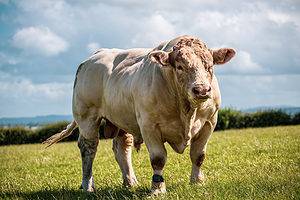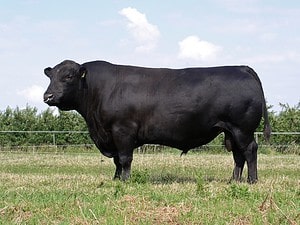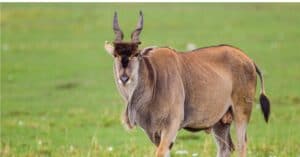Many people are interested in learning about what animals eat. It’s intriguing to find out that some critters, like alligators, will eat garbage, and others are pickier. If you consume meat or dairy, you may want to know what your food is eating! It’s a strange thought, but it can help ensure you’re getting the highest quality meat and dairy products possible.
Perhaps you’re just curious about what a cow’s diet consists of. Whatever reason you’re here, we’re happy to dive into everything there is to know about what cows eat!
The Biology of Cows
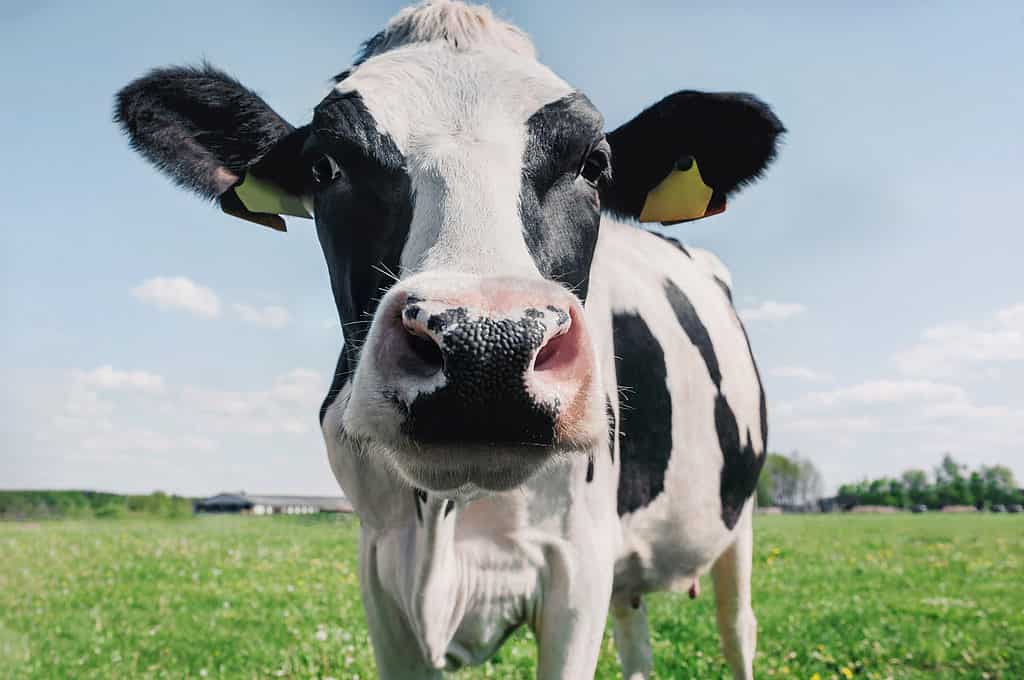
Cows graze most of the day and spend the evenings eating and digesting the food they ate during the day.
©Alena Demidyuk/Shutterstock.com
Cows are diurnal mammals, which means they are up during the day and asleep at night. They graze most of the day and spend the evenings eating and digesting the food they ate during the day. Cud-chewing is another name for this practice.
To aid in grazing, cows have fewer teeth than other mammals. They don’t have upper jaw incisors. They feature a sturdy, leather-like pad in the place of upper teeth. In contrast to goats and sheep, they also have an inflexible top lip.
These animals utilize their tongues to hold a piece of food and chew it off because of their special dental structure. Cows are herbivores that eat mostly plants. Cows very briefly chew their meal before swallowing it when they are feeding. The largest part of the stomach, the rumen, receives the meal next.
Millions of microbes here assist the animal in obtaining the nourishment it requires from its diet. Cows select a comfortable spot to lay down and eat their cud once their rumen is at capacity.
What’s in a Cow’s Diet?
In order to determine the precise diet preferences of dairy cows, researchers in 2008 polled 350 dairy farmers from all over the nation. After investigating those common ingredients, the researchers discovered that humans are unable to digest 80% of what cows consume.
The majority of the food that cows consume is essentially grass. Fun fact: Farmers refer to it as silage and hay. Contrary to popular belief, dairy cows consume stems and leaves from grains such as maize, wheat, and oats significantly more frequently than they do grains like corn kernels.
Dairy cows do consume some grain, although it typically only makes up about a quarter of their total diet. Some have been cultivated especially for cows, while others have been repurposed after being used to make food or beverages, such as barley that was previously used to make beer.
Some of the other goodies that cows enjoy that many humans like as well are:
- Bananas – They are abundant in carbohydrates, sugars, and vitamin B6. They also contain a lot of potassium, which helps to strengthen cows’ bones.
- Apples – They are beneficial for cows and rich in numerous nutrients. Nevertheless, they must be administered sparingly because too much of them might cause stomach bloating in cattle.
- Cactus – This is abundant in vitamin A, calcium, potassium, and highly soluble carbs. Additionally, it serves as a reliable source of water for cows raised in challenging conditions.
Cows may get plenty of vitamins and roughage from oranges. Additionally, they include antimicrobials that help shield the cows from microorganisms that might cause illness. Lastly, due to their high sugar and vitamin content, watermelons are a nutritious treat that cows can consume as a supplement.
Issues With Animal Feed
There are further problems with corn and soybeans. These row crops are suitable for human consumption. Rather, they are raised on farms and manufactured in massive quantities. The US raises billions of land animals every year, using millions of acres of cropland, billions of pounds of crops that are edible to humans, and an inefficient system that threatens our ecosystem, wildlife, wellness, and food production.
Tips for Feeding Cows
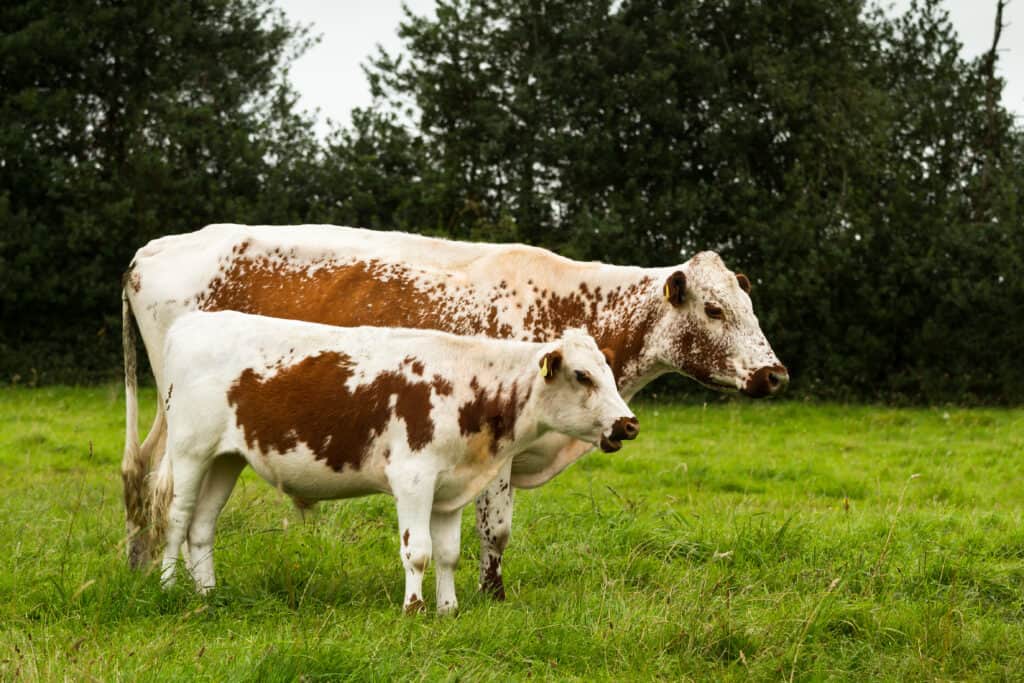
It takes a wealth of information, effort, and money to keep livestock.
©Jane Stanley/Shutterstock.com
Cattle feeding is more difficult than some people think. Hay is not simply placed across from them and expected to be consumed. Much more is required than that. The truth is that you need to know what kind of feed is accessible, how to feed your cows, and how the food will affect the health and production of your cattle.
It takes a wealth of information, effort, and money to keep livestock. Choose the appropriate feed to fulfill your cattle’s dietary needs. When it comes to selecting food for your cows, there are numerous possibilities. Your decision should take into account the food requirements of your cows as well as what is offered locally.
Since it’s challenging to ration feed, expert assistance from a veterinarian or cattle specialist is always useful. You will receive advice from a veterinarian or cattle expert regarding how much to feed your cows and the ideal nutritional makeup of their diet.
Up Next
- Cow Lifespan: How Long Do Cows Live?
- How Many Cows Are In The World?
- 10 Incredible Cow Facts
- Lightning Strikes Cow And Instantly Overcooks Steak
The photo featured at the top of this post is © iStock.com/Toltek
Thank you for reading! Have some feedback for us? Contact the AZ Animals editorial team.



